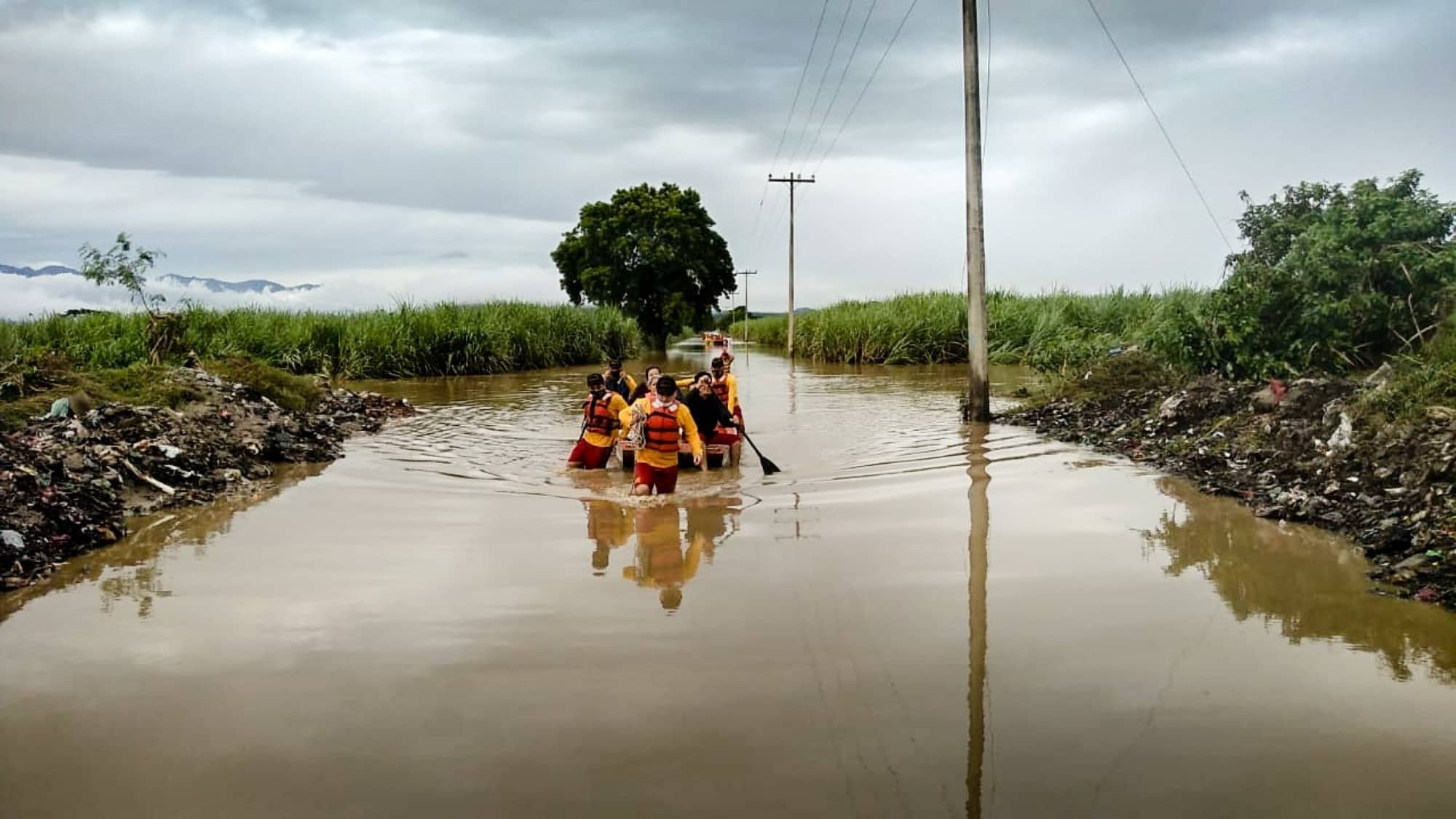Hurricanes Eta & Iota: Contaminated Water & Damage to Health Facilities Threaten Millions in Honduras
More than four weeks after Hurricanes Eta and Iota hit Central America, several thousand Hondurans remain without access to clean water and health services. Most water sources in the Santa Barbara department in Honduras are contaminated, exposing the population to illnesses such as water-borne and skin diseases, warns Project HOPE. In addition, more than one hundred health facilities remain inoperative across affected areas.

Bethesda, MD (21 December, 2020) – More than four weeks after Hurricanes Eta and Iota hit Central America, several thousand Hondurans remain without access to clean water and health services. Most water sources in the Santa Barbara department in Honduras are contaminated, exposing the population to illnesses such as water-borne and skin diseases, warns Project HOPE. In addition, more than one hundred health facilities remain inoperative across affected areas.
“We are extremely concerned because people are now at increased risk of water and vector-borne diseases,” warns Tom Cotter, Director of Emergency Response and Preparedness at Project HOPE. “In the department of Santa Barbara where we respond, damage to sewer systems and wells has left most water sources contaminated.”
Project HOPE and its partner SAMU have conducted nearly 1,200 medical consultations during which they encountered several patients with water quality-related health needs, including gastrointestinal and dermatological illnesses.
Besides, Project HOPE is on the ground conducting water purification training and supply distribution that will provide 3,000 families with safe water. With much of the region living in poverty, families cannot afford treated water or sufficient equipment to purify water at home. Project HOPE is also supporting local authorities in Santa Barbara with water quality testing.
Hurricanes Eta and Iota have also damaged several hospitals and clinics. As of December 1, more than 400 health facilities had reported damage, of which 120 were reported inoperative. At least 12 health facilities reported damage to their cold chain equipment, which has disrupted the refrigeration of critical medicines and vaccines.
“More than 20 percent of the population in Honduras has limited to no access to health services due to damage caused by both hurricanes. This could have major life-threatening consequences given the health needs generated by the COVID-19 pandemic,” warns Cotter. “With so much damage, it is difficult to implement infection and prevention control measures in health facilities.”
Since the beginning of the pandemic, Honduras recorded over 117,000 COVID-19 cases and over 3,000 deaths, according to the John Hopkins University and Medicine’s COVID-19 tracker.
In-depth damage and needs assessments are still ongoing although access to certain affected areas remains difficult, which gives an incomplete picture of the true extent of needs. Rapid assessments conducted so far paint a grim humanitarian picture, with several thousand people to be in need of aid for several months to come. Around 94,000 people remain in shelters while more people are turning to makeshift settlements where sanitation and hygiene services are barely or not available.
Facts and Figures:
- As of December 1, about 2 million people had limited or no access to health services due to damage to the health services network, of which at least 500,000 have health needs.
- About 185,000 people are estimated to be isolated and remain without access to humanitarian and medical aid workers.
- The Government of Honduras indicated that the damage caused by Hurricanes Eta and Iota could reach over 10 billion dollars.
- Honduras recorded more than 2,660 new cases of COVID-19 and 52 deaths in the last 7 days, according to John Hopkins University and Medicine’s COVID-19 tracker.
Project HOPE in Honduras has:
- Conducted water purification training and supply distribution to provide 3,000 families with safe water.
- Supported regional authorities with water quality testing in Santa Barbara department.
- Conducted nearly 1,200 medical consultations in partnership with the Spanish INGO SAMU.
- Delivered 200,000 surgical and KN95 masks to local partners and the Honduran government for distribution.
Media Gallery:
You can find images here from Honduras that can be used free of charge with the requirement to credit Project HOPE or @ProjectHOPEOrg on social media.

About Project HOPE:
Project HOPE operates around the world wherever the need is greatest, working side-by-side with health care workers and their communities, addressing the greatest public health challenges to enable people to live their best lives. We respond to disasters and health crises and stay on in communities long after disaster strikes to help find solutions to epidemics and any other neglected health needs. More: Hurricanes Eta and Iota: How Project HOPE is responding.